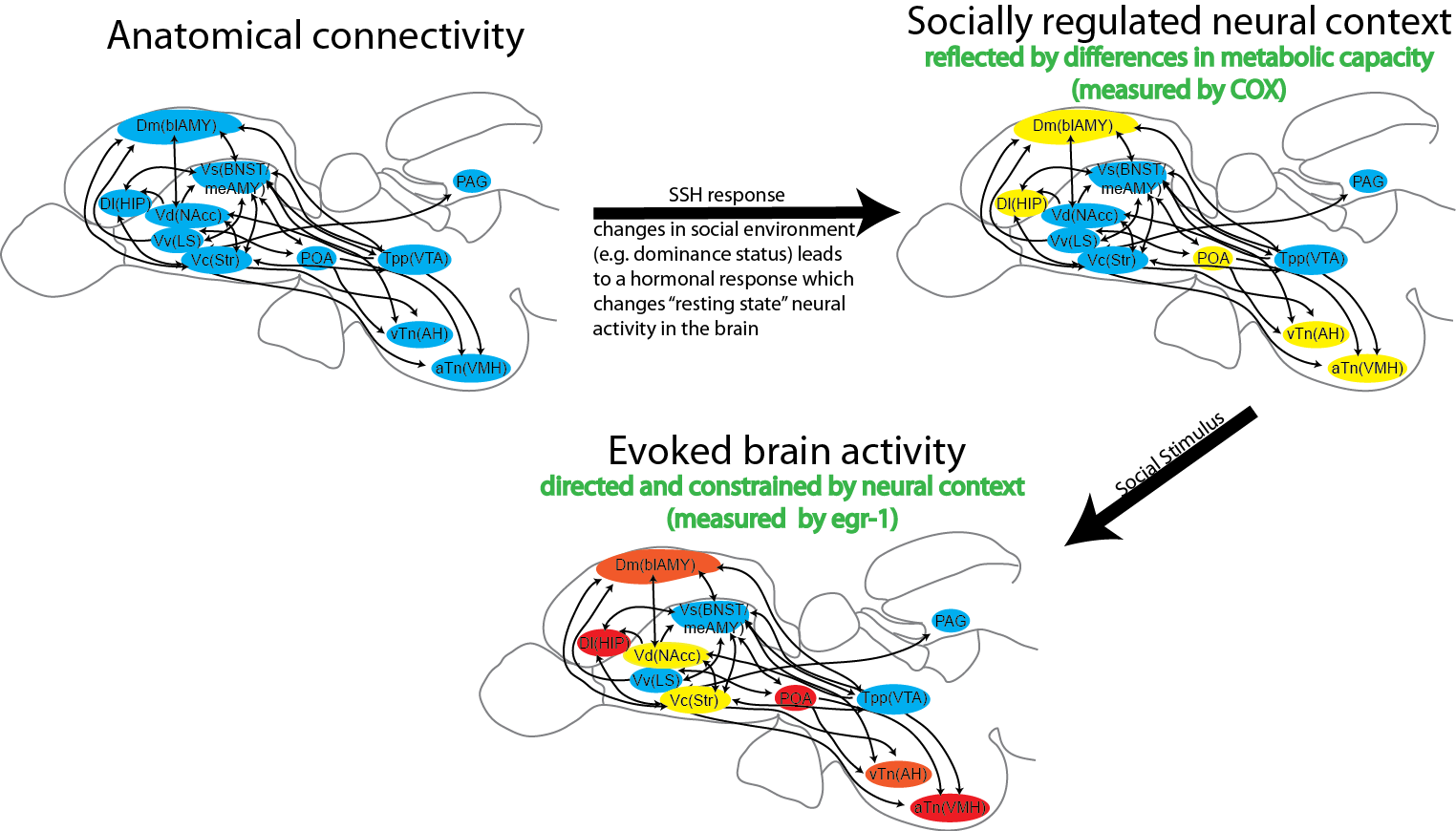Animals are bombarded with ever changing visual, acoustic, chemical, tactile and social information as they navigate their environment. The central nervous system integrates these stimuli with internal information and past experience in order to guide adaptive behavioral decisions (i.e. approach or avoidance of a salient stimulus). Even controlled laboratory presentations of stimuli are not processed in the brain with static stimulus-response chains, but rather processing depends on the state of local and distributed brain networks. The network state is the emergent structure of ongoing activity in the brain: the response properties of one neural element (be it a single neuron, assembly of neurons or a brain region) is affected by the modulatory activity of the network it is embedded in \cite{Bressler:2007ty}. Thus neural context (i.e. network state) is a determinative factor in sensory processing, influencing not only the perception of stimuli but also behavioral decision-making.
Across vertebrates, social behavior is linked to a core network of brain regions called the social decision making network (SDMN). The SDMN is comprised of 11 brain regions, many of which are bidirectionally connected to one another and are sensitive to sex steroid hormones (SSH). They have been linked to a large variety of social and sexual behaviors \cite{OConnell:2011hk, Newman:1999ve, Crews:2003il, Goodson:2005gb}.
My overarching hypothesis is that neural context in the SDM network represents an animals internal computing framework for interpreting external social information and that SSHs preconfigure the neural context of the network. Consistent with this hypothesis, I expect that ongoing neural activity will be influenced by SSHs and that this neuromodulatory patterning will be correlated to the neural responses evoked by social interaction. As a general approach I will exploit the different time courses of two neural activity measures: cytochrome oxidase and egr-1 within the same animals to measure ongoing neural activity and also activity evoked by social interactions.

image
Aim 1: To examine how the brain is organized over time following an opportunity to ascend in social status. I will determine how functional networks change in the brain as animals transition from a subordinate (SUB) to a dominant (DOM) social status. I will then test how this process is impacted by SSH antagonists.
AIM 2: Examine how the animals respond to social challenge and opportunity at different stages of their transition. I will expose transitioning animals to either a territorial challenge or a reproductive opportunity at different stages in their transition and examine cytochrome oxidase and egr-1 levels.